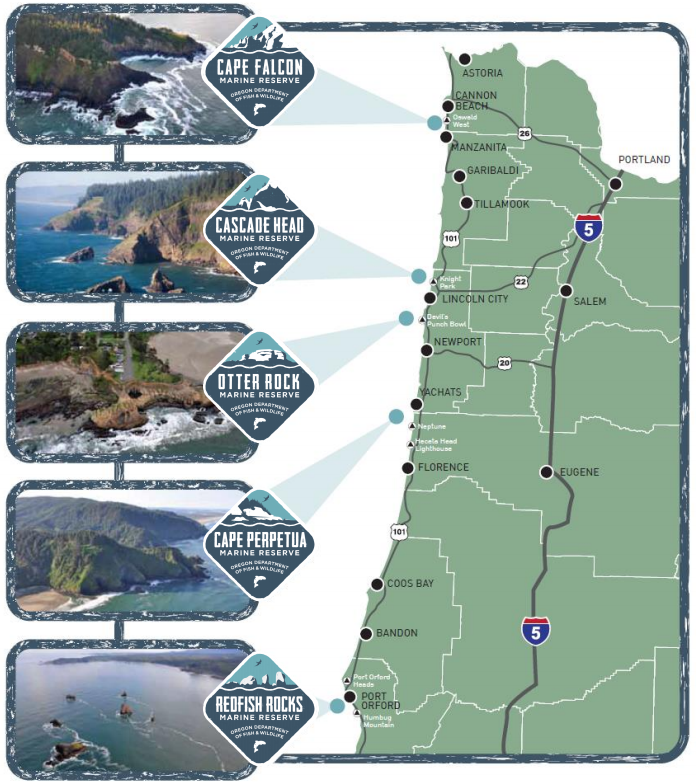Oregon’s Marine Reserve System

In 2008, the State of Oregon began to consider the establishment of a system of fewer than ten marine reserves along its coast as part of a continuing effort to move towards managing its marine waters and submerged lands using an ecosystem-based approach. The overall purpose of marine reserves is to provide an additional tool to help protect, sustain, or restore the nearshore marine ecosystem, its habitats, and species for the values they represent to present and future generations. Such action complements the collective efforts of Oregon, Washington, and California to manage the California Current in an ecosystem-based manner as expressed in the West Coast Governors’ Agreement on Ocean Health (Gregoire, Kulongoski, and Schwarzenegger, 2007).
A marine reserve is an area within Oregon's Territorial Sea or adjacent rocky intertidal area that is protected from all extractive activities, including the removal or disturbance of living and non-living marine resources, except as necessary for monitoring or research to evaluate reserve condition, effectiveness, or impact of stressors (OPAC Policy Recommendations Document, 2008).
Oregon has currently designated 5 Sites as marine reserves. The Cape Falcon, Cascade Head, Otter Rock, Cape Perpetua, and Redfish Rocks marine reserves are each named for local natural landmarks. Within the marine reserves all removal of marine life is prohibited, as is ocean development.
The Oregon Department of Fish and Wildlife (ODFW) manages and scientifically monitors these five sites. They are taking a deeper dive into Oregon's marine reserves to gain a better understanding of marine reserve protections, our nearshore waters, and coastal communities. The ODFW Marine Reserves Program is located at the coast in Newport, Oregon with six full-time staff.
Timeline
The State of Oregon has been engaged in a process to consider marine reserves along its coast for over a decade. This timeline article provides an overview of Oregon’s process, from the first conversations to the present day.
Rules
Learn more about the rules within Oregon Marine Reserves and the official boundaries of the five Marine Reserve sites.
Marine Reserves Science
There's more to learn
There is plenty more for us to learn about Oregon's nearshore waters and coastal communities. ODFW provides a portal to this information through the http://Oregonmarinereserves.com website, which is designed to share information as they study and learn from these sites, and bring deeper understanding to the surface.
The ODFW is conducting scientific monitoring to understand the effects of marine reserves (prohibition of fishing and other extraction) over time on the marine environment as well as on people and communities. This information will help us evaluate the use of marine reserves as a management tool in the future. The current monitoring efforts are also proving vital in enhancing our understanding of Oregon’s nearshore environment, our coastal economy, and coastal communities.
Community Engagement
Learn more about how the State is working with communities in marine reserve monitoring and management.




















